- More Ways to Shop
- Holidays & Occasions
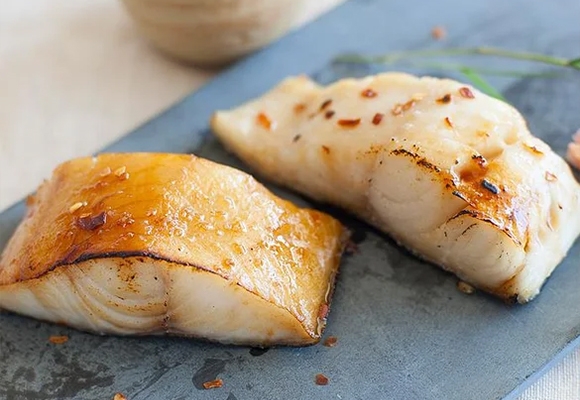 Seafood Samplers
Seafood Samplers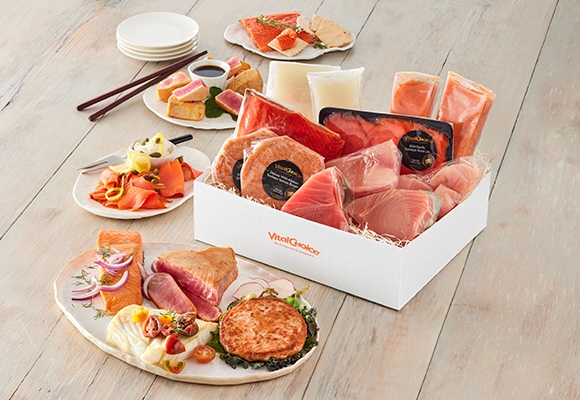 Vital Box Subscriptions
Vital Box Subscriptions
Don't have an account?
Click Here- Fast, secure checkout
- Exclusive promotions & offers
Product Information - General
Product Information - General by Category
What are your fish cans lined with? (about PET and BPA)
We share the concerns of scientists and consumers about plastic food packaging.
Here's what we know about the three plastics typically used the types of bags, pouches, and cans in which our foods are packaged: PET, polycarbonate, and BPA.
PET (polyester)
Polyethylene terephthalate or PET, or is the chemical name for polyester.
When PET is used for fiber or fabric applications, it is usually referred to as "polyester." When used for container and packaging applications, it is typically called "PET" or "PET resin."
The plastic pouches in which our vacuum-sealed frozen fish are packaged are generally made from PET, but may be made from other FDA-approve plastics and may contain other FDA-approved food-packaging chemicals.
(Note: Despite their similar names, polyethylene terephthalate PET is not a phthalate compound ... see "PET and phthalates are not the same", below.)
PET is used in everything from surgical implants and soft drink or water bottles to peanut butter jars.
Special grades of PET are used for carry-home prepared food containers that can be warmed in the oven or microwave.
PET has been deemed safe by the U.S. FDA and the European Food Safety Authority (EFSA) for use in many food packaging applications.
PET does not usually contain BPA, but may contain BPA (see "What is BPA?", below).
There is little scientific data to suggest that PET causes disease or produces estrogen- or endocrine-modulating activity.
Polycarbonate and BPA
Polycarbonate is is a lightweight plastic used in a wide variety of common products, including reusable bottles and food storage containers.
Bisphenol A (BPA) is a key building block of polycarbonate and the polycarbonate-based epoxy resins used to line food cans.
Polycarbonate resins are used to keep the can material from corroding or reacting with the food and thereby acquiring a metallic taste.
The only alternative can linings are enamel linings made from plant-derived oils and resins. However, virtually no can makers use oleoresin linings, which dissolve in the presence of high-acid foods such as tomatoes and canned crab or mollusks.
BPA is a known endocrine-disruptor, which means that it can bind to estrogen receptors and produce hormonal effects.
Minuscule traces of BPA have appeared in tests of (non-Vital Choice) foods packaged without BPA ... findings that show the ubiquity of BPA in the environment.
BPA is used in countless other manufactured goods, including cash register receipt paper and other items that people handle routinely.
We recommend this 2010 Washington Post article on the subject: Alternatives to BPA containers not easy for U.S. foodmakers to find.
BPA status of Vital Choice cans and jars
Unfortunately, it is impossible for any food brand to provide an absolute guarantee that none of their foods in cans (or in jars with plastic-lined lids) are free of BPA or other bisphenol compounds (e.g., BPS, BPF, or BADGE).
There are three reasons why no food retailer (including Vital Choice) can or will provide absolute guarantees: The makers of food cans and can linings are not legally required to disclose the exact contents of their products. Because BPA and other bisphenol compounds are commonly found in human environments – including the air and surfaces in manufacturing plants – the makers of food cans and can linings often refuse to provide any guarantees about the presence or absence of BPA and other bisphenol compounds in their containers. BPA and other bisphenol compounds are commonly found in human environments – including the air and surfaces in food and food-container manufacturing plants. Therefore, even foods packaged in containers certified "BPA-free" may contain traces of bisphenol compounds.
With those three important caveats in mind, here's what the suppliers of our food cans say about their containers:
Product cans that do not knowingly or intentionally contain BPA or other bisphenol compounds:
- Salmon: Our canned salmon comes from two different companies, each of which uses cans from different suppliers.
- Can Supplier #1 provided this statement on April 8, 2015: "The interior coatings of the can and end(s) lids ... are not epoxy based and therefore would not contain any intentionally added Bisphenol-A."
- Can Supplier #2 provided this statement on March 10, 2016: "The 3 can manufacturers have confirmed that our retail canned salmon containers are coated with food contact materials that are manufactured without BPA."
Sardines and Mackerel: The internal linings are certified BPA-NI, which means that they are not intentionally made with BPA or other bisphenol compounds (e.g., BPS, BPF, or BADGE). This is the August 5, 2014 statement from the maker of our sardine and mackerel cans: "Internal protective coatings comply with Regulation (EC) No. 1895/2005 (on certain epoxy materials) – Bisphenol A and constituents of Bisphenol A are not intentionally used in their manufacture." Product cans that may contain bisphenol compounds other than BPA: Tuna: In 2010, our tuna canner forwarded statements from the two makers of the resinous coatings for their cans, stating that the resins lining the interior of the cans do not contain intentionally added BPA, but they did not mention other bisphenols. Our tuna canner could not certify the absence of BPA or other bisphenols.
Accordingly, our tuna can linings may (intentionally or unintentionally) contain bisphenol compounds other than BPA (e.g., BPS, BPF, or BADGE).
Note: 20 parts per billion of BPA appeared in a 2009 test of our canned albacore tuna. This low level, and the fact that the type of lining used does not normally contain added BPA, suggests the BPA came from the environment (air or surfaces) in the canning or can-making facilities (see the article links below). Product cans that intentionally contain BPA or other bisphenol compounds: Dungeness Crab, Wild Oregon Tiny Pink Shrimp, and Smoked Mussels: The suppliers have said that their can linings intentionally contain BPA, in order to protect against corrosion from the high acidity of shellfish. You may be interested in these past newsletter articles on the subject: Consumer Mag Finds BPA in Many Canned Foods BPA Traces in Our Canned Tuna? An Update
PET and phthalates are not the same
Phthalates (more accurately, orthophthalates) are a family of plastic compounds used to make other plastics flexible, and have been shown to possess endocrine-disrupting properties.
Although "polyethylene terephthalate” (the plastic) and "phthalate” (the additive) may sound alike, they are chemically dissimilar.
PET is not an orthophthalate, nor does PET contain orthophthalates.
Our cans do NOT contain phthalates, and, unlike phthalates, PET is not yet proven to possess endocrine-disrupting properties.
Recent test results suggesting that PET may possess endocrine-disrupting properties are questionable, given the high risk of "false-negative" results when testing bottled water or packaged foods for endocrine-disrupting properties.
For example, a 2011 university study funded by the German government (whose authors declared no conflicts of interest) found that deep-spring water packaged in glass showed traces of endocrine-disrupting properties.
Their results suggest that even spring water (or raw foods) can be contaminated with endocrine-disrupting chemicals (Wagner M, Oehlmann J 2011; section 4.3. Sources of estrogenic contamination).
Sources
- American Chemical Society. Can Conundrum: Chemists come up short in attempts to remove bisphenol A from food can liners. Jly 20, 2009. Accessed at http://pubs.acs.org/cen/email/html/cen_87_i29_8729bus2.html
- Lyche JL, Gutleb AC, Bergman A, Eriksen GS, Murk AJ, Ropstad E, Saunders M, Skaare JU. Reproductive and developmental toxicity of phthalates. J Toxicol Environ Health B Crit Rev. 2009 Apr;12(4):225-49. Review.
- Rider CV, Furr JR, Wilson VS, Gray LE Jr. Cumulative effects of in utero administration of mixtures of reproductive toxicants that disrupt common target tissues via diverse mechanisms of toxicity. Int J Androl. 2010 Apr;33(2):443-62. Review.
- Wagner M, Oehlmann J. Endocrine disruptors in bottled mineral water: estrogenic activity in the E-Screen. J Steroid Biochem Mol Biol. 2011 Oct;127(1-2):128-35. doi: 10.1016/j.jsbmb.2010.10.007. Epub 2010 Nov 2.
Is your fish sushi safe?
Like the best sushi bars, our seafood is flash frozen within hours of harvest, to preserve its fresh caught quality and render it safe to serve raw.
As Gourmet magazine reports, “Japanese chefs never serve fresh salmon raw… It ‘has to be frozen for sushi,’ stresses sushi master Shiro Kashiba of Shiro’s Sushi Restaurant in Seattle.”
Our flash frozen fish has been deep chilled to at least -10 F. During shipping it will spend two days with dry ice, which ranges between -78 and -109 F.
These extremely cold temperatures are more than sufficient to ensure that our fish meets the accepted safety guidelines for rendering raw fish "sushi-safe."
Do you test your products?
As described below, we purity-test all of our supplemental fish oils and certain seafood products.
Frozen seafood According to virtually all academic researchers and public health authorities, the frozen Pacific salmon and other Pacific fish species we sell are naturally low in mercury and man-made contaminants. Accordingly, we do not routinely test them.
Likewise, virtually all scientists and public health authorities consider the shellfish species we sell — including prawns, shrimp, crab, mollusks, lobster, calamari, and scallops — inherently low in contaminants, so we do not routinely test them.
You can learn more about the inherent safety of our frozen seafood on our Purity Story page — especially in the sections titled "Vital Choice seafood is very low in mercury" and "Vital Choice seafood is very low in pollutants".
Following the Fukushima nuclear plant accident in March of 2011, we tested our potentially affected Pacific fish — sockeye salmon, king salmon, albacore tuna, and halibut — for radiation six times, with the last tests results reported in April of 2016. Those tests confirmed that our fish was very safe in relation to standards set by the FDA and other public health authorities. See "Radiation testing" below for more information.
Fish oils Every batch of each of our fish oils is independently tested for mercury and other metals as well as for oxidation byproducts and man-made contaminants such as PCBs. We will never sell supplements that exceed industry, international, or U.S. standards.
Canned seafood Despite their inherent purity, we periodically test our canned tuna and salmon for mercury, lead, arsenic, and other natural contaminants. None of our canned fish has ever exceeded official U.S. safety standards. Test results are available upon request.
We do not test our canned sardines, mackerel, anchovies, or shellfish for mercury or other heavy metals, because these species typically contain very low levels of those naturally occurring contaminants.
Seafood typically comes in cans lined with resins that contain BPA or related compounds. You can learn about the status of Vital Choice seafood cans in the FAQ titled "What are your fish cans lined with? (about PET and BPA)".
Note: The arsenic that occurs in most seafood is no cause for concern, thanks to the critical distinction between organic arsenic (proven safe at the levels in seafood) and inorganic arsenic (not safe). As the CDC says: "Studies have not found organic arsenic in seafood to be toxic to humans."
Land-based foods We do not test our land-based food products for natural or man-made contaminants, because there is no evidence that FDA-approved products such as chicken, beef, pork, berries, or cooking oils contain significant levels of such contaminants.
Radiation testing of seafood Since the March, 2011 nuclear accident at Fukushima, Japan, we've commissioned six rounds of radiation tests on samples of Vital Choice seafood.
Those tests have either found either no detectable Fukushima-related radiation, or the very low, clearly safe levels that occur naturally in the Pacific fish species we sell.
We stopped testing our seafood for radiation in April 2016, after publishing the results of the last round of tests. That decision was based on three factors:
- Our tests repeatedly produced reassuring results.
- Independent tests of Pacific seafood have found no problems.
- Independent research estimates that levels of Fukushima-related radiation in Pacific waters peaked in 2016, and will decline steadily in future years.
- Click here for links to the reassuring results of all six rounds of tests, and for independent information about the clear safety of Pacific seafood since the accident.
The first tests took place in March of 2012, and included all the Pacific fish and shellfish we offered at the time.
After that first round, we commissioned annual radiation tests on the fish species that — hypothetically — run a higher risk of contamination: sockeye salmon, king salmon, albacore tuna, and halibut.
That hypothetically higher risk relates to these species' migration patterns, which can extend westward through the mid-Pacific Ocean.
But our test results, and those of government and university labs, have not found any actual problems.
How long will your frozen and other products keep?
The following guidance reflects U.S. government recommendations.
We've noted any exceptions to U.S. storage-length guidelines for frozen seafood, that, based on our extensive experience, appear overly conservative.
Canned seafood storage Canned seafood will keep for five years. Use canned seafood before the expiration date printed on the can or pouch.
When it comes to canned salmon, we agree with the customers who find that its flavor improves with age — at least up to the expiration date. Canned salmon connoisseurs look forward to enjoying the best “vintages”!
Opened cans of seafood can be kept in the refrigerator for 3-4 days, after which their omega-3 fats will begin to oxidize and smell “fishy”. Before refrigerating, enclose opened cans tightly in a plastic bag or plastic wrap and reseal opened pouches.
Frozen seafood storage Frozen seafood retains its initial quality for varying periods of time, and must be stored at 0°F.
A fishy smell indicates oxidation of a seafood product’s fragile omega-3 fats and resulting rancidity. Discard any frozen seafood that smells fishy before or after being thawed.
The longevity of the seafood product depends upon three factors: 1. Storage temperature 2. Temperature consistency 3. Fat content of the specific seafood
NOTE: Self-defrosting freezers go through a regular thawing/freezing cycle that degrades the quality and flavor of frozen seafood and accelerate its decay.
Based on our experience, these official U.S. guidelines are very conservative, and we've noted any significant disagreements with them. Discard products that have been frozen longer than the maximum time shown here, especially any that emit "fishy" odors:
- Smoked fish — 2 months*
- Shellfish (e.g., shrimp/prawns, scallops, crab) — 3-6 months
- Fatty fish (e.g., salmon, albacore tuna, sablefish) — 2-3 months*
- Lean fish (e.g., cod, halibut, lingcod, sole, yellowfin tuna) — 4-6 months
*In our experience, smoked fish or lox retains its quality in the freezer for 3-4 months, while fatty fish usually lasts 3-6 months.
The best place to store fish is a good quality chest or upright freezer capable of maintaining a stable sub-zero temperature.
Thawed seafood will last 1-2 days in the refrigerator, but smoked seafood will last up to 14 days in the refrigerator after being thawed.
Smoked seafood: storage guidelines When kept frozen at 0°F or below, vacuum-sealed packages of smoked salmon and sablefish (including nova lox) will retain their quality for 2-4 months.
Once thawed, smoked fish should spend no more than one or two days in the refrigerator before being consumed.
Meats and poultry: storage guidelines Frozen meats and poultry will generally retain their quality for a period ranging from 4 to 12 months, with chops and ground meat being the least durable.
Hot dogs made from beef or bison will retain their quality for 1-2 months. Salmon “dogs” should be thawed and consumed within 1 month of delivery.
Frozen bacon and sausage will retain its quality for 1-2 months. Salmon bacon should be thawed and consumed within 1 month of delivery.
Soups and stews: storage guidelines Thaw and consume these before the “Best By” date printed on the package. The quality of frozen soups and stews begins to decline after 2-3 months.
Sources:
- U.S. Department of Health & Human Services. Storage Times for the Refrigerator and Freezer. https://www.foodsafety.gov/keep/charts/storagetimes.html
- U.S. FDA. Refrigerator & Freezer Storage Chart. https://www.fda.gov/media/74435/download
What are the benefits of wild-caught fish over farmed fish?
Wild-caught fish offer nutritional, food safety, and environmental advantages over farmed fish.
Nutritional advantages of wild fish versus farmed fish Farmed fish are fed unnatural diets that feature foods to which fish are not adapted, such as grains and soy.
These artificial diets resulted in unnaturally high levels of omega-6 fatty acids, and low levels of omega-3 fatty acids. For more information on the fatty acid imbalance in farmed fish, see Farmed Salmon Get More Lice, Lose Omega-3s, Farmed Fish Possess Unhealthful Fat Profiles, Farmed Tilapia Taken to Task, and Farmed Salmon's Diet Yields Unhealthful Cardiovascular Effects.
The fat imbalance in farmed fish matters because most people assume that fish provide ample amounts of omega-3 fatty acids — and the average American’s diet provides extremely high levels of omega-6 fatty acids, and unhealthfully low levels of omega-3 fatty acids: an imbalance unprecedented in human history.
This extreme imbalance matters because human beings evolved on diets containing roughly equal amounts of omega-3 and omega-6 fatty acids, consuming at most three molecules of omega-6 fatty acids for every molecule of omega-3 fatty acids.
In stark contrast, the average American consumes 10 to 20 molecules of omega-6 fatty acids for every molecule of omega-3 fatty acids — an imbalance that promotes chronic inflammation, among other problems.
For more information about the adverse health consequences of America’s unhealthful “omega imbalance” see the Omega-3/6 Balance page of our website.
Food safety advantages of wild fish versus farmed fish Major scientific studies have shown that farmed salmon contains substantially higher levels of man-made contaminants such as PCBs, compared with wild salmon. There’s good reason to believe that other farmed fish are similarly contaminated, because they’re given similar kinds of feed.
And, according to The Audubon's Living Oceans Campaign, “farmed salmon are fed more antibiotics per pound of ‘livestock' than are any other farmed animal.” That practice can result in antibiotic residues in the flesh of farm salmon — a problem that also plagues industrially farmed chicken and pork.
Environmental harms of fish farming Industrial salmon farms raise their fish in crowded net pens that are anchored in stationary locations.
As a result, the sea floor beneath those pens becomes contaminated with fish waste, antibiotics, and pesticides. In addition, if they well documented fact that industrial salmon farms act as incubators for salmon diseases — especially viruses — and sea lice.
Although sea lice are a natural feature of the oceans, and are found on wild salmon, the salmon in salmon farms bear many more lice, which they spread to the surrounding ocean and to wild salmon that migrate nearby.
Salmon farms feed their fish pesticides designed to kill lice, but these toxic chemicals are increasingly failing to control the swarms of lice found in salmon farms. For more information on that see Farmed Salmon Get More Lice, Lose Omega-3s, and other articles in the Farmed Salmon section of our newsletter archive.
In addition, industrial salmon farms feed their fish vast amounts of small “forage” fish such as sardines and herring, which form a critical part of the ocean food chain. This practice robs wild fish of a critical part of their diet, which harms and could lead to the collapse of fisheries upon which millions of people depend.
See the Aquaculture (Fish & Seafood Farming) section of our newsletter archive for articles that convey compelling evidence of the environmental dangers of industrial salmon farms.
What are omega-3 fatty acids, and why are they important?
Omega-3 fatty acids are molecules essential for the optimal function of virtually every cell in our bodies.
However, we cannot manufacture them internally. Instead, along with vitamins, these essential nutrients can be obtained only in the diet.
Two different families of omega-3s Omega-3 fatty acids come in two basic forms, with distinctly different health impacts:
Short-chain (polyunsaturated) omega-3 ALA from plant foods. Long-chain (highly unsaturated) omega-3s (DHA and EPA) from seafood and fish oil. The body only needs DHA and EPA, very small amounts of which it can make from plant-source ALA.
While plant-source omega-3 ALA is healthful and desirable, it’s very clear that we gain far more health benefit from ample intakes of seafood-source DHA and EPA. (Recently, omega-3 DHA oils extracted from algae have become available.)
Health authorities worldwide recommend consuming 250mg to 500 mg of DHA + EPA daily.
The richest food sources are fatty fish such as wild salmon, sardines, tuna (especially albacore), and sablefish, single servings of which can contain omega-3 levels as high as those found in many fish oil capsules.
For more information on omega-3 fatty acids, see our Omega-3 Facts & Sources page, and articles listed by health topic (Bone Health, Brain Health, etc.) under the Omega-3 Fatty Acids section of our newsletter archive.
America’s “omega imbalance” Over the past century, people in developed countries, particularly in the United States, have largely eliminated omega-3 fatty acids from their diet, and have simultaneously consumed vastly greater qualities of omega-6 fatty acids.
There is a great deal of evidence that this historically unprecedented “omega imbalance” harms many bodily systems, most notably the cardiovascular/heart system, the brain, while promoting chronic inflammation.
Ample, fast-growing evidence indicates that restoring the balance of omega-3 and omega-6 fatty acids to which the human body is evolutionarily adapted helps prevent major health problems and maintain optimal health.
For more information on this unhealthful imbalance, and ways to fix it using diet choices, see the Omega-3/6 Balance page of our website.
What are antioxidants and how do they benefit my health?
Antioxidants are dietary nutrients that help prevent the cell and tissue damage caused by free radicals in the body. Free radicals are highly reactive, unstable molecules that cause oxidative stress and can lead to degenerative diseases such as cancer and arthritis.
Antioxidants fight oxidative stress by neutralizing free radicals. Naturally occurring fish oils contain good concentrations of vitamin E, which is a powerful antioxidant. In wild salmon, astaxanthin (as-tuh-zan'-thin), the pigment that gives the fish its rich red color is also a very powerful antioxidant.
Studies suggest that astaxanthin may be 100 times more powerful than vitamin E at quenching free radicals. This antioxidant is also thought to be 10 times more effective than other carotenoids, like beta-carotene.
What are the nutritional benefits of salmon?
An excellent source of protein, our Wild Red Canned Salmon is high in omega-3 fatty acids. It contains all the essential amino acids, as well as B-complex vitamins like niacin and riboflavin.
According to the Alaska Seafood Marketing Institute (ASMI), “Alaska canned salmon is rich in selenium, vitamin E, zinc and low-fat protein, all noted for strengthening immune systems.” They also note “the delicate, edible bones present in Alaska canned salmon are good to eat and high in bone-building vitamin D, calcium, magnesium and phosphorus.”
Each 53gm (1.89 oz) serving of our Wild Red Traditional Style (with skin and bones) canned salmon contains 85 calories, including 35 calories from fat, which represents about 6% of the Daily Value for fat intake, based on a 2,000 calorie diet. There are 4gm of total fat per 53 gm serving, 1gm of saturated fat, and 804mg of omega-3s.
Each 53gm (1.89 oz) serving of our Wild Red Skinless-Boneless canned salmon contains 70 calories, including 30 calories from fat, which represents about 6% of the Daily Value for fat intake, based on a 2,000 calorie diet. There are 4gm of total fat per 53 gm serving, 1gm of saturated fat, and 654mg of omega-3s.
Which of your products are certified kosher?
We're pleased to offer Kosher certification on all products for which it is currently available.
Whenever possible we try to increase the number of Kosher certified products we have on offer. The following Vital Choice products were Kosher Certified at the time of this writing.
Please refer to individual product pages to verify current certification status for all products.
- All Frozen Sockeye, King, Silver, Keta, & Pink Salmon - Portions & Fillets (Earth K*)
- All Frozen Sablefish Portions (Earth K*)
- All Hot Smoked Salmon, Candy-Style Smoked Salmon, Nova Lox-Style Smoked Salmon / Sablefish, & Oven Ready Smoked Sablefish (OU*)
- All Salmon Burgers, Sausages, & Jerky (OU*)
- Most Canned Sockeye, Silver, & Pink Salmon* (OU)
- Most Canned Albacore Tuna**
- All Canned Skipjack Tuna & Anchovies* (OU)
- All Organic Frozen Fruit (OU*)
- Most Organic Seasonings & Rubs (KSA*)
All Organic Chocolates (Star D*)
*Please see individual product pages for the most up-to-date information, including specific certifiers.
**Canned Smoked Sockeye is not Kosher certified. Pouched Albacore Tuna and canned Ventresca are not Kosher certified at this time. Certification of Donostia Anchovies is managed by the Spanish producer.
What is the Marine Stewardship Council (MSC)?
Certain Vital Choice products possess chain-of-custody certification by MSC, which assures you that the product comes from an MSC-certified fishery.
You will find the blue MSC seal on the page of each Vital Choice product that is certified by MSC.
The Marine Stewardship Council (MSC) is an independent, international non-profit organization which was set up to find a solution to the problem of over-fishing.
The MSC rewards environmentally responsible fisheries management and practices with certification, and they are allowed to display the MSC seal.
The MSC was first established by Unilever, the world's largest buyer of seafood, and WWF, the international conservation organization, in 1997.
In 1999 the MSC became fully independent from both organizations and today are funded by a wide range of organizations, including charitable foundations and corporate organizations around the world.
The MSC spent two years developing their environmental standard for sustainable and well-managed fisheries. This standard was put together following worldwide consultation with scientists, fisheries experts, environmental organizations, and others with a strong interest in preserving fish stocks for the future.
If you are concerned about over-fishing and its environmental and social consequences you will increasingly be able to choose seafood products which have been independently assessed against the MSC environmental standard and labeled to prove it.
This label will assure you that the product comes from a well managed fishery and has not contributed to the environmental problem of over-fishing.
FAQ













![Discover Delicious Alaskan Halibut,[object Object]](https://images.contentstack.io/v3/assets/blta522552136812831/blt2b26ede1dc10efa2/65d8ef7c700fb21435e873eb/Halibut_new_Promo_Spot.jpg?auto=webp)



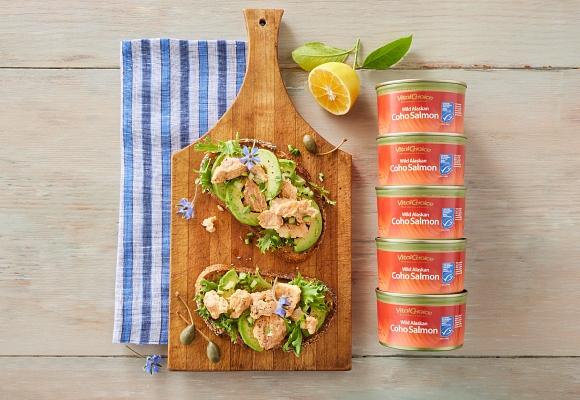
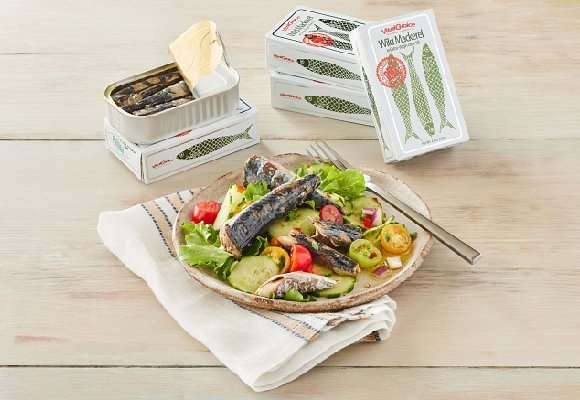
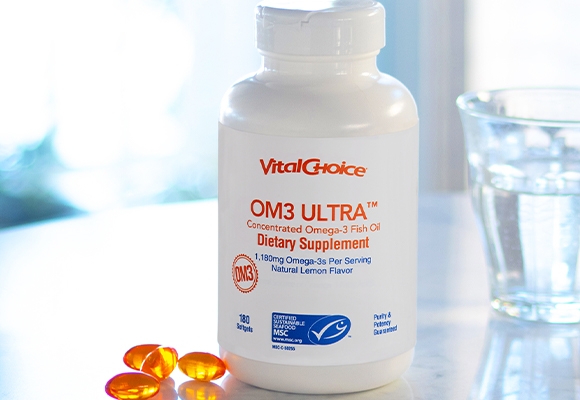
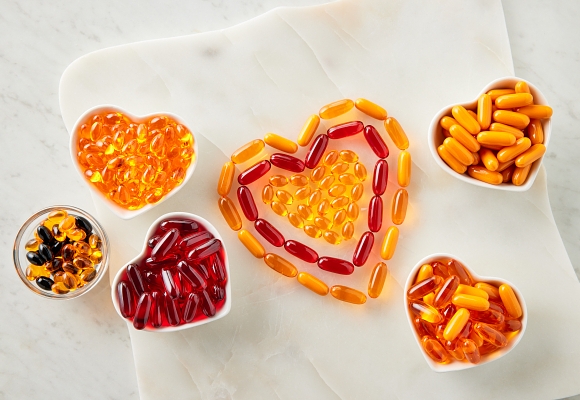


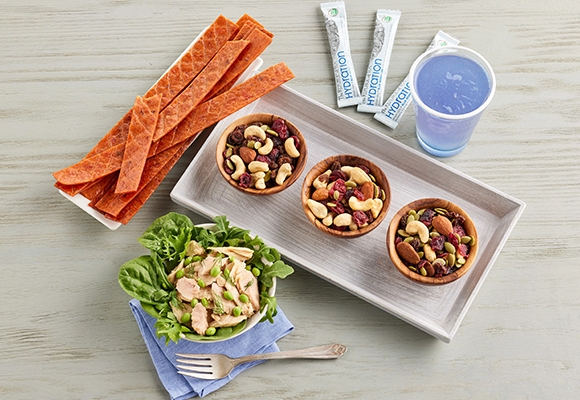


.png?auto=webp)